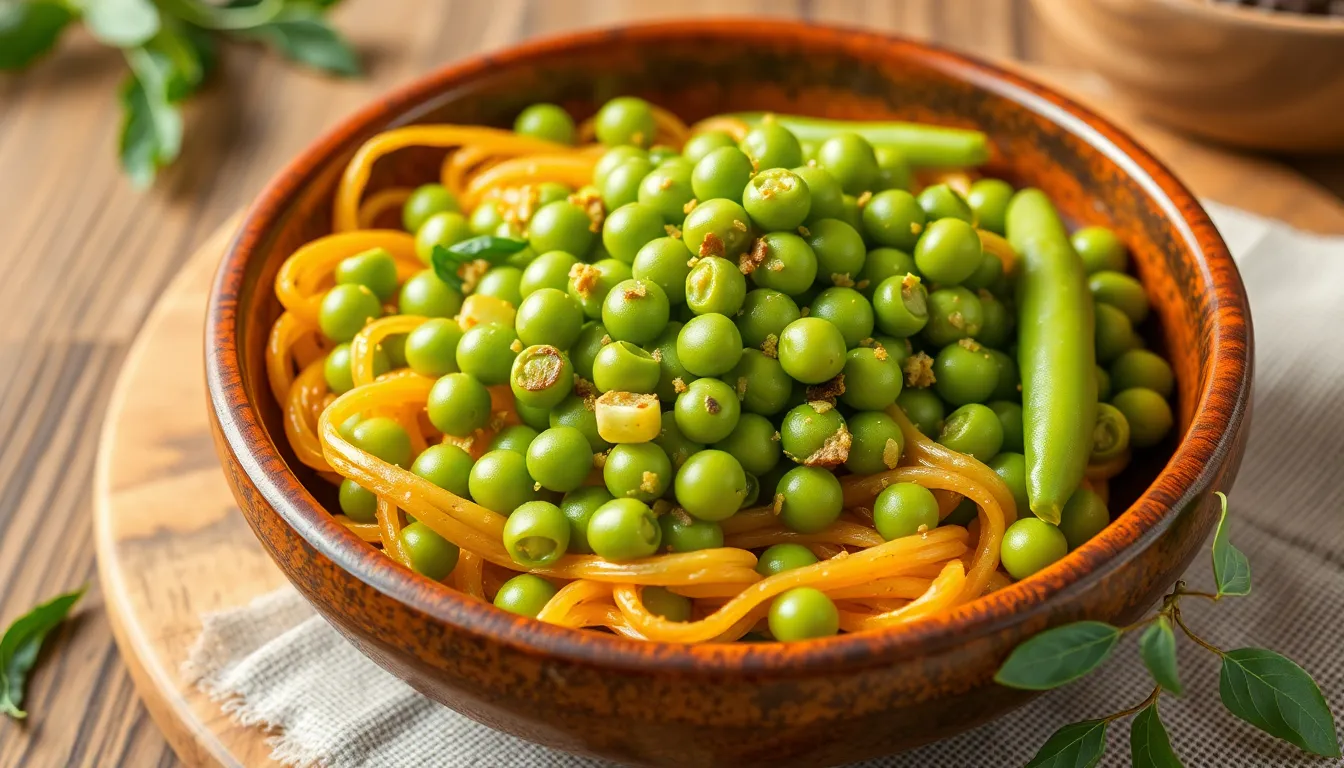Herbs for Health: Nutritional Benefits of Common Culinary Herbs
I. Introduction
Herbs have been an essential component of cooking for centuries, infusing dishes with unique flavors and aromas. From enhancing the taste of a simple salad to elevating complex sauces, culinary herbs play a pivotal role in the kitchen. Beyond their culinary uses, many herbs also possess significant health benefits, making them valuable assets in our diet. This article aims to explore the nutritional benefits of common culinary herbs, helping you understand how to leverage their properties for better health and well-being.
II. Understanding Culinary Herbs
A. Definition of culinary herbs
Culinary herbs are the leafy green parts of plants used to flavor dishes. These herbs can be used fresh or dried and add depth and complexity to various cuisines. Common examples include basil, parsley, cilantro, mint, and oregano.
B. Difference between herbs and spices
While herbs are typically the green, leafy parts of plants, spices are derived from other parts of plants, such as seeds, bark, roots, and fruits. For instance, cumin and cinnamon are spices, while parsley and rosemary are classified as herbs. Understanding this distinction allows us to appreciate the diverse ways each can enhance our culinary creations.
C. Historical significance of herbs in various cultures
Throughout history, herbs have been revered not only for their culinary uses but also for their medicinal properties. Ancient Egyptians used herbs for embalming and healing, while traditional Chinese medicine has long utilized herbs for various ailments. In Mediterranean cultures, herbs were essential for preserving food and adding flavor before the advent of refrigeration.
III. Nutritional Benefits of Common Culinary Herbs
A. Overview of key nutrients found in herbs
Culinary herbs are rich in essential vitamins, minerals, and antioxidants. They may contain:
- Vitamins A, C, K, and E
- Minerals like iron, calcium, and magnesium
- Antioxidants that combat oxidative stress
- Anti-inflammatory compounds that promote overall health
B. Importance of incorporating herbs into daily meals
Regularly incorporating herbs into your meals is an excellent way to enhance flavor without adding extra calories or sodium. Furthermore, their health benefits contribute to a balanced diet, supporting the immune system and promoting digestion.
IV. Table: Nutritional Benefits of Common Culinary Herbs
| Herb Name | Key Nutrients | Health Benefits | Common Culinary Uses |
|---|---|---|---|
| Basil | Vitamin K | Anti-inflammatory properties | Used in pesto and salads |
| Parsley | Vitamin C | Rich in antioxidants | Garnishing and flavoring |
| Cilantro | Vitamin A | Detoxifying properties | Used in salsas and curries |
| Mint | Vitamin A | Aids digestion | Used in teas and desserts |
| Oregano | Vitamin K | Antibacterial properties | Used in sauces and marinades |
V. Spotlight on Specific Herbs
A. Basil
1. Nutritional profile
Basil is a nutrient-dense herb, rich in vitamin K, vitamin A, and essential oils, which contribute to its aromatic flavor.
2. Health benefits
Apart from its culinary appeal, basil is known for its anti-inflammatory and antioxidant properties, which can enhance heart health and reduce the risk of chronic diseases.
3. Culinary uses and recipes
Basil is commonly used in Italian cuisine, particularly in pesto, caprese salad, and as a fresh garnish on pizzas and pasta dishes.
B. Parsley
1. Nutritional profile
Parsley is loaded with vitamin C, vitamin K, and iron, making it an excellent addition to any meal.
2. Health benefits
It can help improve digestion, support the immune system, and has been linked to reduced inflammation.
3. Culinary uses and recipes
Parsley can be used as a garnish, in salads, or blended into sauces like chimichurri. A classic tabbouleh is a refreshing way to enjoy parsley.
C. Cilantro
1. Nutritional profile
Cilantro is a source of vitamin A, vitamin K, and essential oils, adding both flavor and nutrition to dishes.
2. Health benefits
Known for its detoxifying properties, cilantro may help rid the body of heavy metals and supports digestive health.
3. Culinary uses and recipes
Cilantro is popular in Mexican and Asian cuisines, commonly used in salsas, curries, and as a topping for tacos and salads.
D. Mint
1. Nutritional profile
Mint provides vitamin A, manganese, and essential oils, contributing to its refreshing taste.
2. Health benefits
Mint is known for its ability to soothe the digestive system and alleviates symptoms of indigestion and nausea.
3. Culinary uses and recipes
Mint is versatile; use it in teas, desserts, or as a garnish in cocktails like mojitos for a refreshing twist.
E. Oregano
1. Nutritional profile
Oregano is rich in vitamin K, antioxidants, and essential oils, boasting a robust flavor.
2. Health benefits
Known for its antibacterial properties, oregano may help combat infections and support respiratory health.
3. Culinary uses and recipes
Oregano is a staple in Mediterranean cuisine, used in sauces, marinades, and as a seasoning for meats and vegetables.
VI. Tips for Growing and Using Fresh Herbs
A. How to grow herbs at home (indoors and outdoors)
Growing herbs at home is easy and rewarding. Here are steps to get started:
- Choose a sunny spot with at least 6 hours of sunlight.
- Use well-draining potting soil.
- Consider growing herbs in pots for easy access and mobility.
- Water the herbs regularly but ensure not to overwater.
B. Best practices for harvesting and storing herbs
To keep your herbs fresh and flavorful:
- Harvest in the morning when the oils are most concentrated.
- Use sharp scissors or shears to avoid damaging the plant.
- Store herbs in a glass of water in the refrigerator, or freeze them in ice cube trays for longer preservation.
C. Tips for incorporating fresh herbs into everyday meals
Incorporating herbs into your meals can be simple and enjoyable:
- Add fresh herbs to salads for a burst of flavor.
- Mix herbs into dressings and marinades.
- Use them to season meats, vegetables, and grains.
- Experiment with herb-infused oils and butters!
VII. Conclusion
Culinary herbs are not only flavorful additions to our meals, but they also offer a plethora of health benefits. By incorporating herbs like basil, parsley, cilantro, mint, and oregano into your cooking, you can enhance both the taste and nutritional value of your dishes. I encourage you to experiment with these herbs in your kitchen and discover your favorites.
Share your favorite herb-based recipes in the comments below, and let’s celebrate the wonderful world of herbs together!
VIII. Additional Resources
A. Links to related articles on cooking with herbs
- 10 Creative Ways to Use Fresh Herbs in Cooking
- The Ultimate Guide to Herb Gardening
- Herbs and Spices: A Flavorful Journey
B. Suggested cookbooks focusing on herbs
- Herbs: A Global History by Gary Allen
- The Herb Cookbook: Recipes and Tips for Cooking with Fresh Herbs by Keith Floyd
- Herbs & Spices: The Cook’s Reference by Tom Stobart




